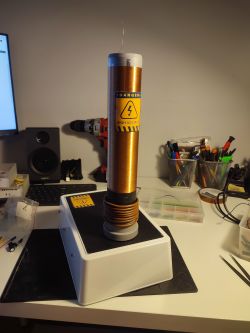
Hello
I've always wanted to build a musical tesla coil, but I was overwhelmed by the complexity of the design schematics found on the internet. Some time ago I found a schematic of a single transistor based coil and decided to improve it so that it could play sound. I decided to share the project so that others could make such a simple coil.
Here is the diagram I found:
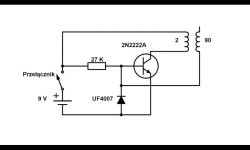
The effect of her work was poor, no spark, only the fluorescent lamps were getting closer to light. I increased the number of windings to 5 on the primary (I made them from a 1.5 mm? cable
The next step was to make the coil play. I used ESP8266 (it was handy, and I had code for arduino on the disk that plays simple tunes). ESP generates a square wave with a given frequency, which controls the unipolar transistor (2N7000), short-circuiting the bases of the transistors controlling the coil to ground. In this way, we managed to get a nice and loud sound from the coil.
Finally, I made a casing from some IKEA box that happened to be at home. As a power supply I used a 36 V impulse power supply (LRS-100-36, I had it from some electro-scrap that I got as a "gift" for parts), I reduced its voltage to 30 V with the potentiometer on it.
I know that the scheme has some shortcomings, it was just created as much as my knowledge allowed, there is definitely something to be improved in it. It is as follows:
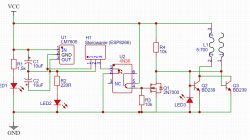
I soldered everything temporarily on a universal board, there are plans to make a printed circuit board.
Unfortunately, I didn't take photos during the creation, but I put in those with the coil ready.
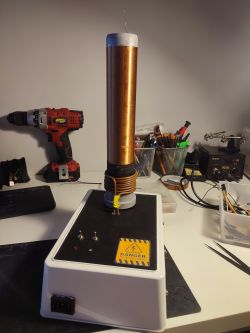
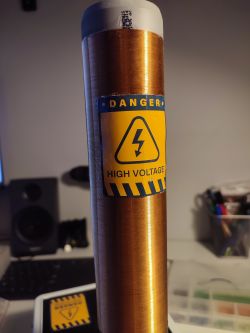
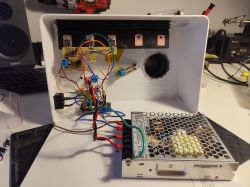
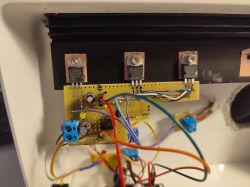
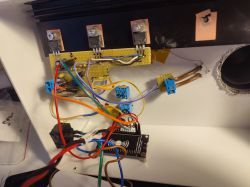

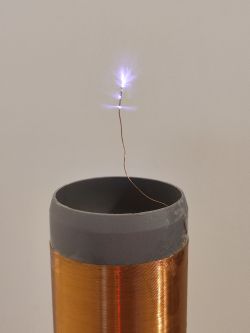
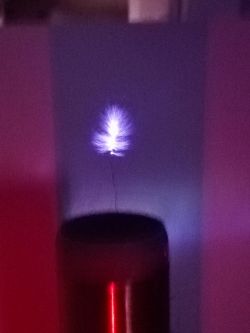
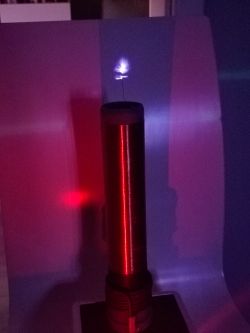
1st movie:
Program code for ESP8266 (written in Arduino IDE) I attach to the topic. ESP provides a page on the local network where you can select a track to play. I add a second program that works immediately after startup (it does not connect via Wi-Fi, only plays one track in a circle).
Regards
PS.
It should be noted that the Tesla transformer generates a high voltage of several kilovolts, so be especially careful when working!
Cool? Ranking DIY





